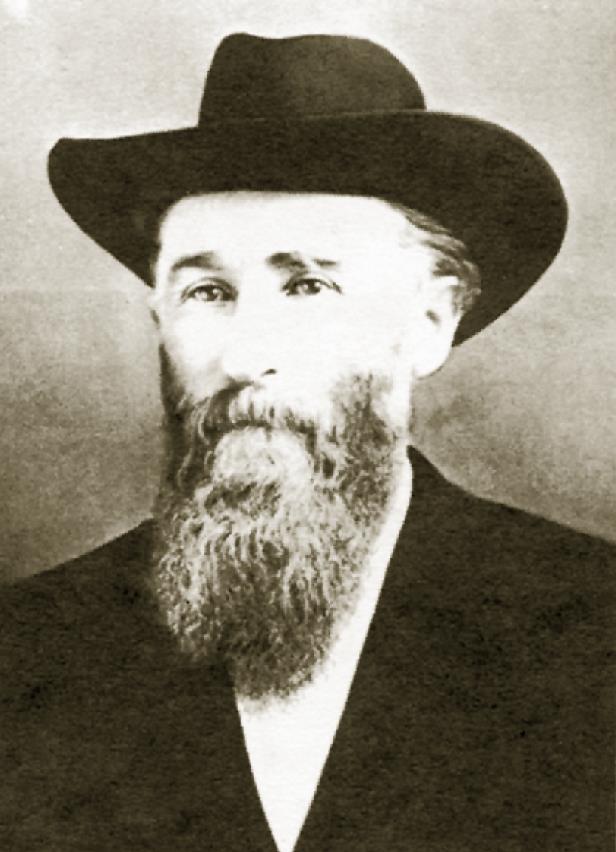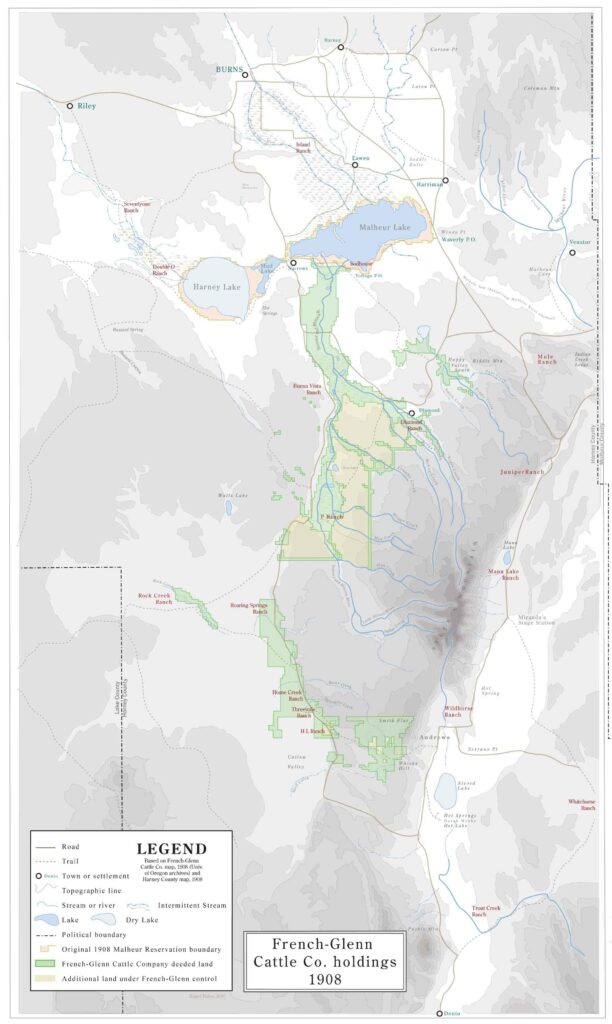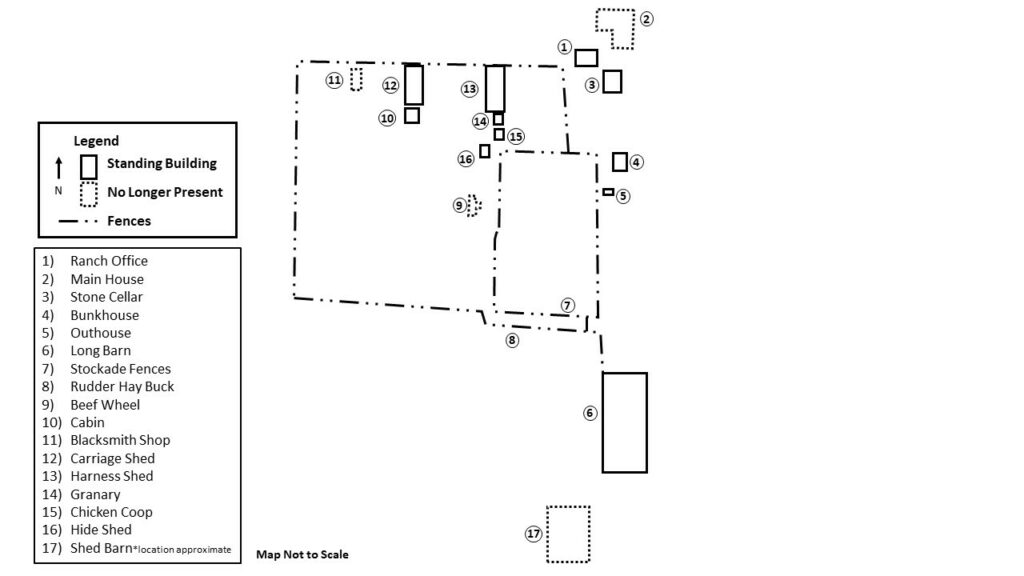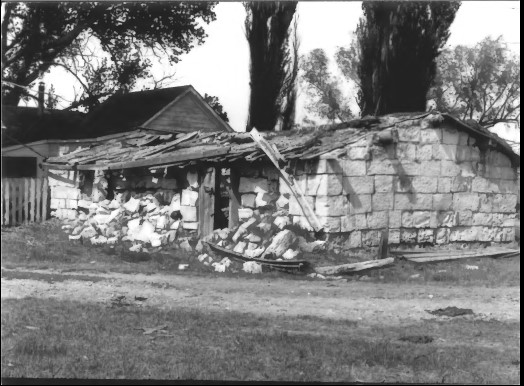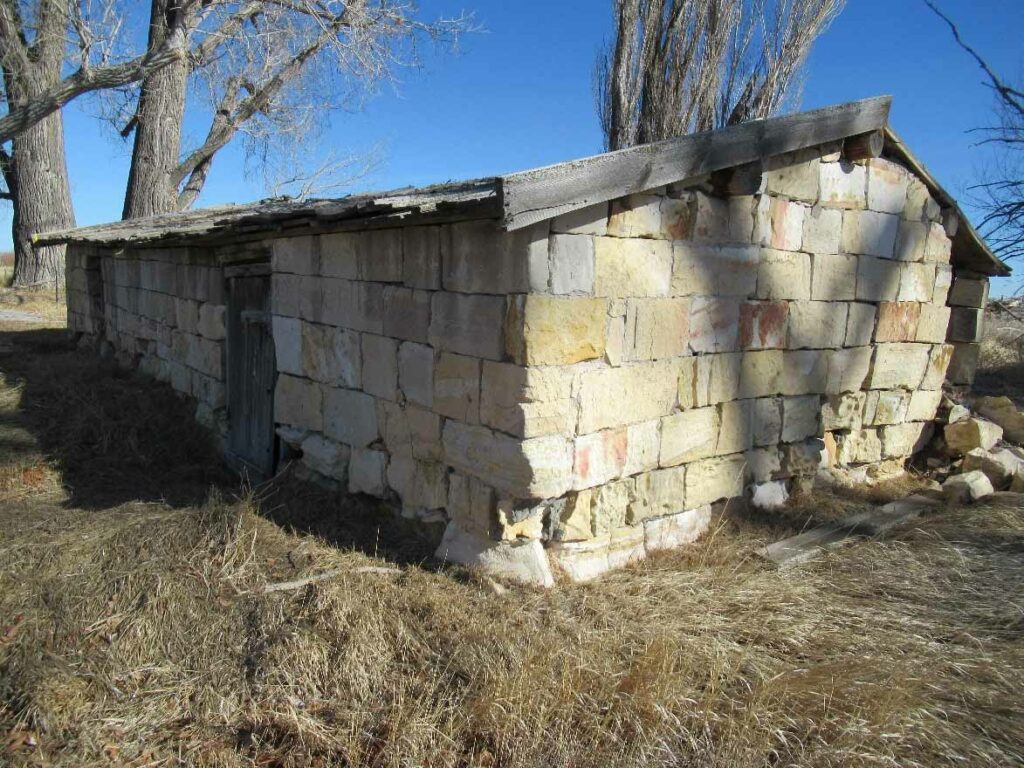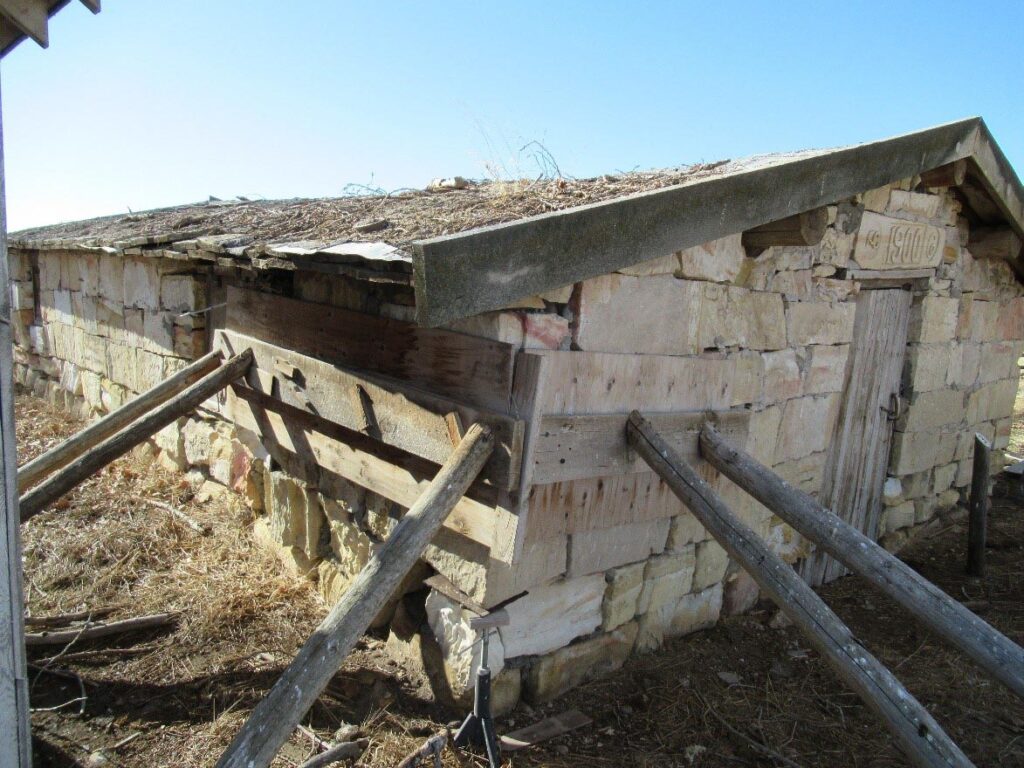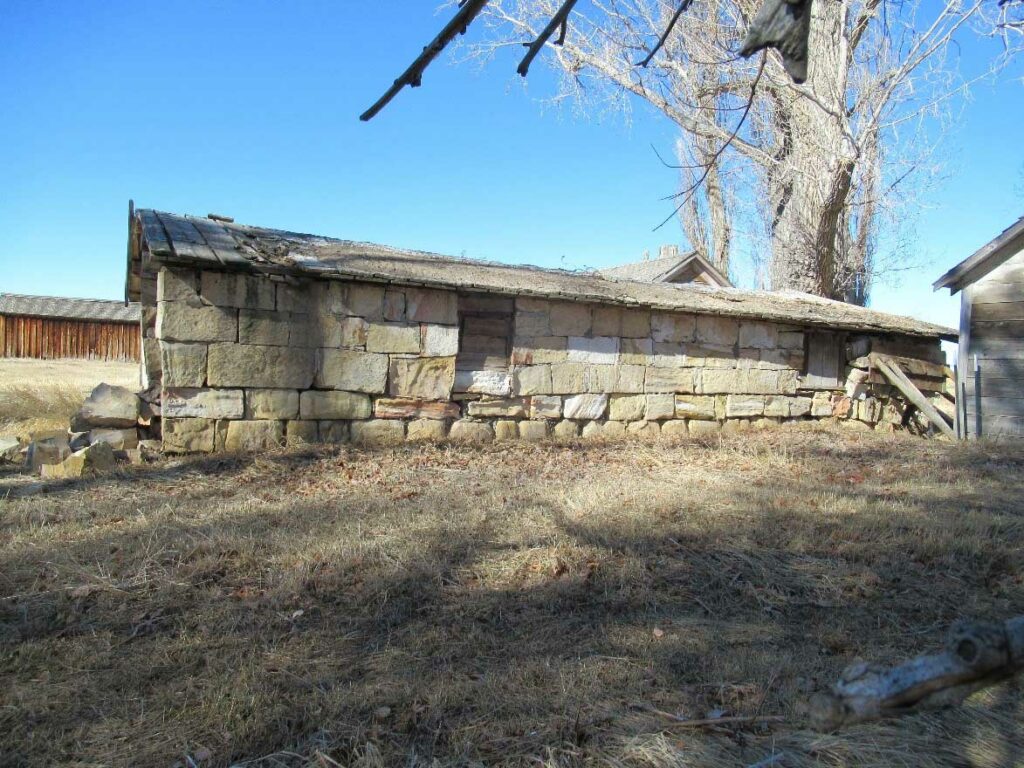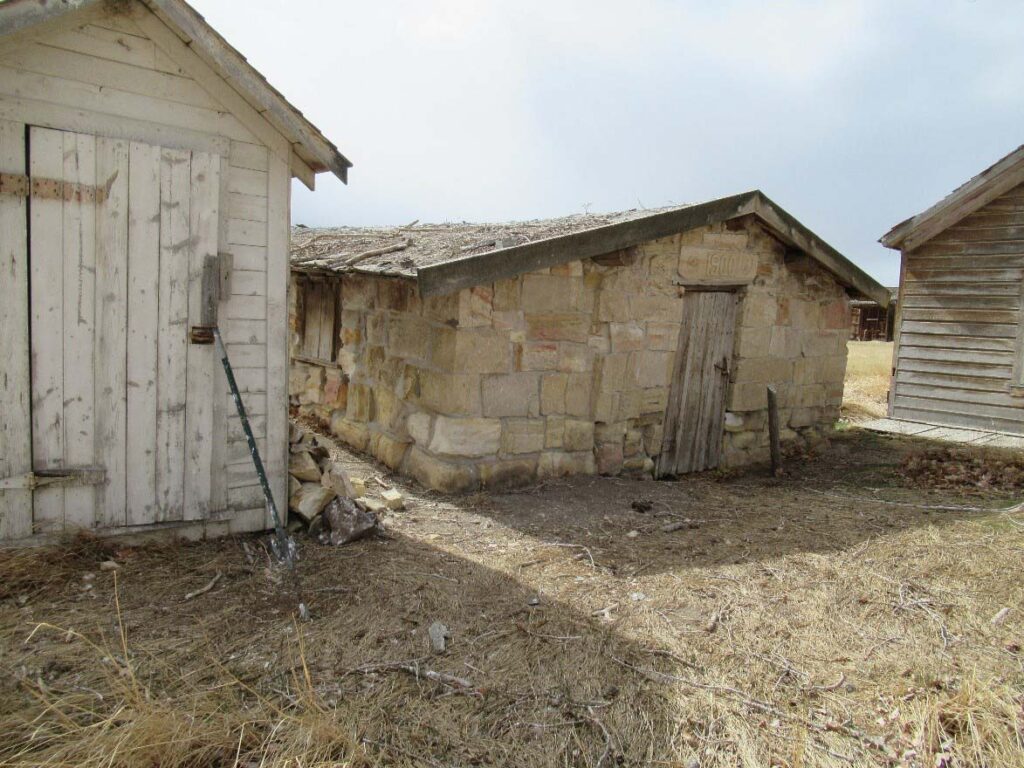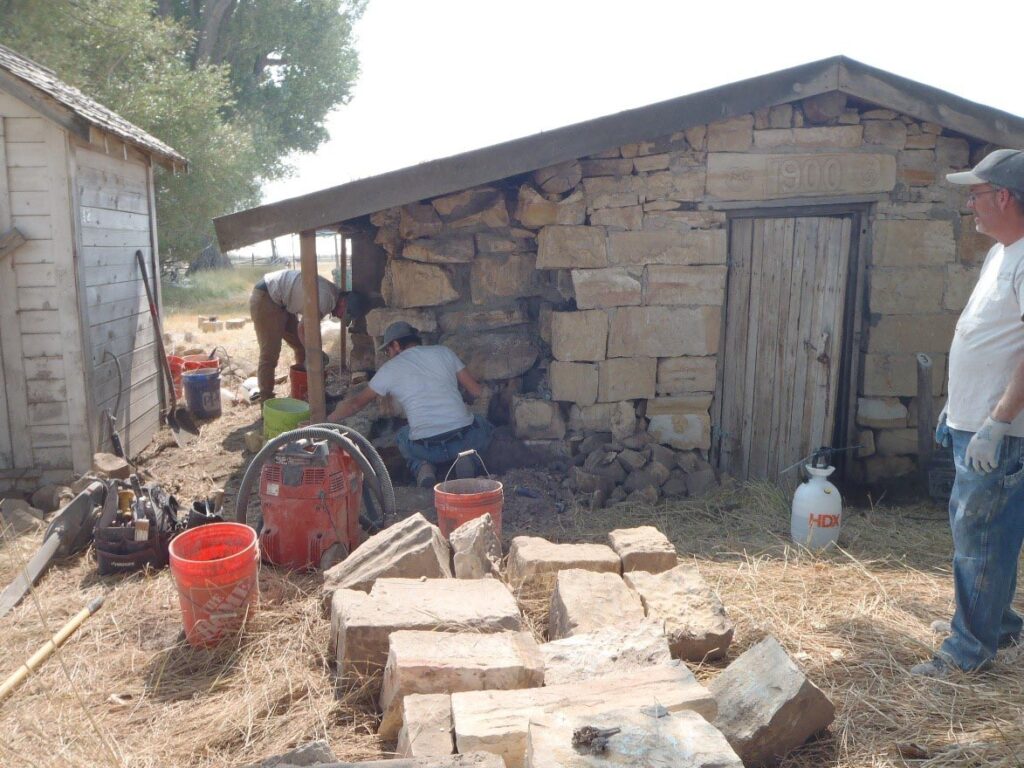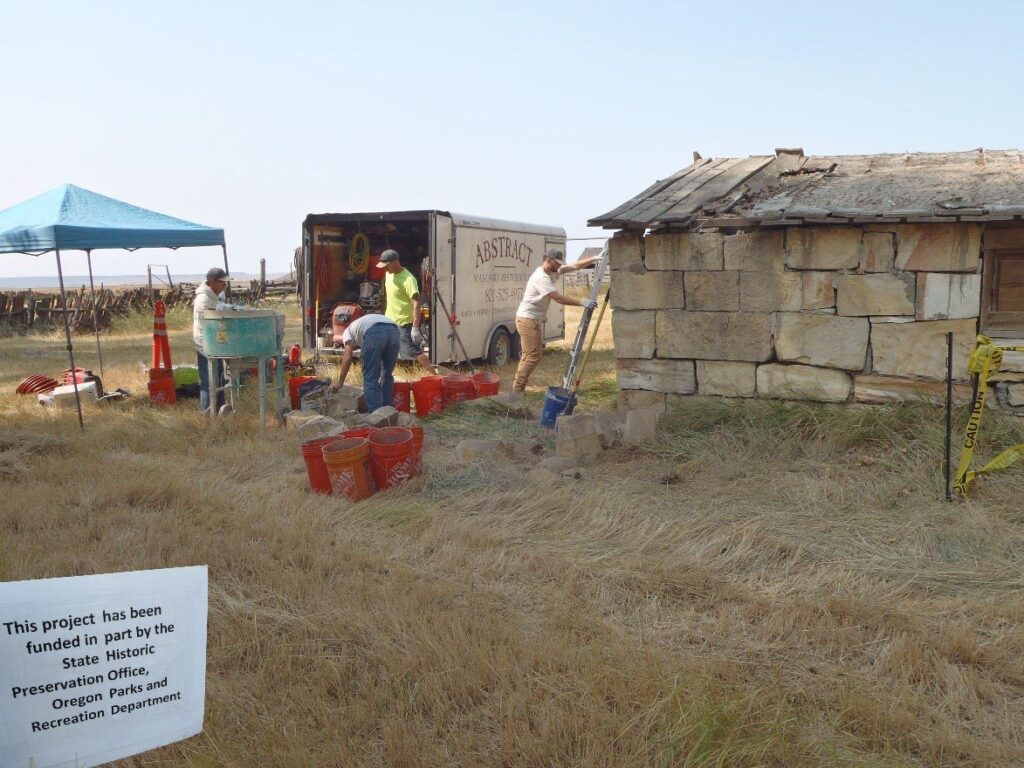U.S. Department of the Interior
Near the Headquarters of Malheur National Wildlife Refuge (NWR), within the Blitzen Valley, sits the historic Sodhouse Ranch. The 10-acre Sodhouse Ranch was established in 1877 by Peter French of the French-Glenn Livestock Company. The land associated with the Sodhouse Ranch was originally purchased by A. H. Robie in the early 1870s under the Swamp Land Act of 1850, this was part of a larger land purchase of about 48,570 acres within the Blitzen and Diamond Valleys. In 1877, Robie sold these 48,570 acres of land to Peter French with the French-Glenn Livestock Company. The Sodhouse Ranch served as the northern headquarters of the French-Glenn Livestock Company from 1877 – 1907.
In 1872, Peter French came to the Blitzen Valley and with the financial backing of Dr. Hugh Glenn, French purchased the lands associated with the P-Ranch, located in the southern portion of Malheur NWR near the town of Frenchglen, under the Homestead Act of 1862. Soon after the purchase of the P-Ranch, French and Glenn became partners, and together they established the French-Glenn Livestock Company. The French-Glenn Livestock Company was in operation from 1872 – 1907. The French-Glenn Livestock Company continued to expand their holdings throughout the late 1800s to encompass an area of over 110,000 acres, within what is now Malheur NWR and the surrounding area including lands in the Blitzen, Catlow, Diamond, and Happy Valleys. This expansion included the purchase of the lands associated with the Sodhouse Ranch from A. H. Robie in 1877. Peter French continued to manage the company until his death in 1897, when he was killed over a land dispute near Sodhouse Ranch. After French’s death the French-Glenn Livestock Company was managed by the Glenn family until they sold the lands and company to Henry L. Corbett and C.E.S. Wood with the Blitzen Valley Land Company of Portland, Oregon in 1907. In 1916, the Blitzen Valley Land Corporation was reorganized as the Eastern Oregon Land and Livestock Company when Louis Swift of the Swift Packing Company purchased 46% of the company’s stocks. The Eastern Oregon Land and Livestock Company sold the lands located within the Blitzen Valley, including Sodhouse Ranch, to the federal government in 1935 to become part of Malheur NWR.
The Sodhouse Ranch was the northern headquarters for the French-Glenn Livestock Company. Emanuel Clark was the foreman for the Sodhouse Ranch during the period that the ranch was owned by the French-Glenn Livestock Company. Throughout Clark’s tenure at the Sodhouse Ranch (1877-1907) about 18 buildings and structures were constructed at the ranch, these include: an office, main house, stone cellar, bunkhouse, outhouse, long barn, shed barn, stockade fences, willow corrals, hay buck, beef wheel, cabin, blacksmith shop, carriage shed, harness shed, granary, chicken coop, and hide shed. Most of the buildings and structures were constructed in the 1880s, however the main house was constructed around 1890, the office was constructed around 1898, and the stone cellar was constructed in 1900. In addition, numerous cottonwood trees were planted at the ranch in 1892 by Clark. The main house was damaged during flooding in the 1980s and was subsequently torn down in the 1990s. The willow corrals were removed by the Civilian Conservation Corps (CCC) in the 1930s. The shed barn was demolished by the CCC in the 1930s. The beef wheel collapsed sometime just prior to the 1977 recordation of the historic ranch. The blacksmith shop burned down in the 1940s.
References:
US Fish and Wildlife Service
1978, Sodhouse Ranch Site Form. Department of the Interior, US Fish and Wildlife Service, Portland, Oregon.
1979, Sodhouse Ranch National Register of Historic Places Inventory – Nomination Form (NR #79002061). Department of the Interior, US Fish and Wildlife Service, Portland, Oregon. Electronic Document, accessed April 11, 2022: https://oregondigital.org/downloads/oregondigital:df67rt25h
During the winter of 2019/2020, the southeast corner of the Stone Cellar, located within the Sodhouse Ranch, collapsed. In 2021 and 2022 the U.S. Fish and Wildlife Service (FWS) secured funding to perform historic preservation treatments on the stone cellar. Historic preservation treatments included repairing the collapsed southeastern corner, repairing the temporarily braced northeast corner, and repointing the mortar throughout the entirety of the building. The majority of this project was funded through the FWS; however, a portion of the project was funded by the State Historic Preservation Office, Oregon Parks and Recreation Department.
Historic Preservation of the Sodhouse Ranch Stone Cellar occurred during the 2021/2022 field seasons by Abstract Masonry. Historic preservation activities included the stabilization of the northeast corner, restoration of the collapsed southeast corner, and repointing the stone building.
Stabilization of the northeast corner included:
- Post shores, jacks, partition walls, and I-Beams were used to shore up the roof logs and roof sill plates to support the corner of the roof.
- The loose stone wall was carefully dismantled from the door on the north, to the window on the east. This included the inner and outer walls.
- The stones were re-laid in their original configuration. The space between the stone walls was infilled with a soft lime mortar.
- The stone masonry between the door and window was repointed, from the ground level to where the stone was re-laid.
- After the masonry had sufficiently cured, the roof shoring was removed.
Restoration of the collapsed southeast corner included:
- Post shores, jacks, partition walls, and I-Beams were used to shore up the roof logs and roof sill plates to support the corner of the roof.
- The loose stone wall was carefully dismantled from the middle of the wall on the south, to the window on the east. This includes the inner and outer walls.
- The stones were re-laid in their original configuration. The space between the stone walls was infilled with a soft lime mortar.
- The stone masonry in this area was repointed, from the ground level to where the stone was re-laid.
- After the masonry had sufficiently cured, the roof shoring was removed.
Repointing of the stone building included:
- Damaged, deteriorated, cracked, missing, Portland cement based, and other inappropriate mortar on the building was removed and repointed. This included the interior and exterior walls of the building.
- Repointing is defined as the removal and repair of damaged, deteriorated, cracked, or missing mortar between the stones. The function of mortar within a wall is to act as bedding between stones, it must be flexible to allow movement/settlement of the building.
- Only the joints were repointed, no stones were repositioned or re-laid. Some stones had settled down (or were laid originally) so that there is not a horizontal mortar joint. In these areas, repointing occurred to the extent that no cutting, chipping or other damage to the stone was done. This means that there are some stone-on-stone areas that remain stone-on-stone without any mortar between the stones.
The Sodhouse Ranch is open to the public daily between August 15th and October 1st, from 8 am to 4 pm. The Sodhouse Ranch is located about 3 miles southwest of the Malheur NWR Visitor Center and Headquarters Area. While at the Sodhouse Ranch visitors can explore the newly restored stone cellar, the historic long barn, office, and many other historic buildings that remain at the site today. Trails and interpretive media can be found throughout the historic Sodhouse Ranch. To plan your visit to Malheur NWR, additional information can be found here. To visit the Sodhouse Ranch, additional information can be found here. An interactive map of the refuge can be found here. The Sodhouse Ranch is #2 on the Blitzen Valley Auto Tour.



